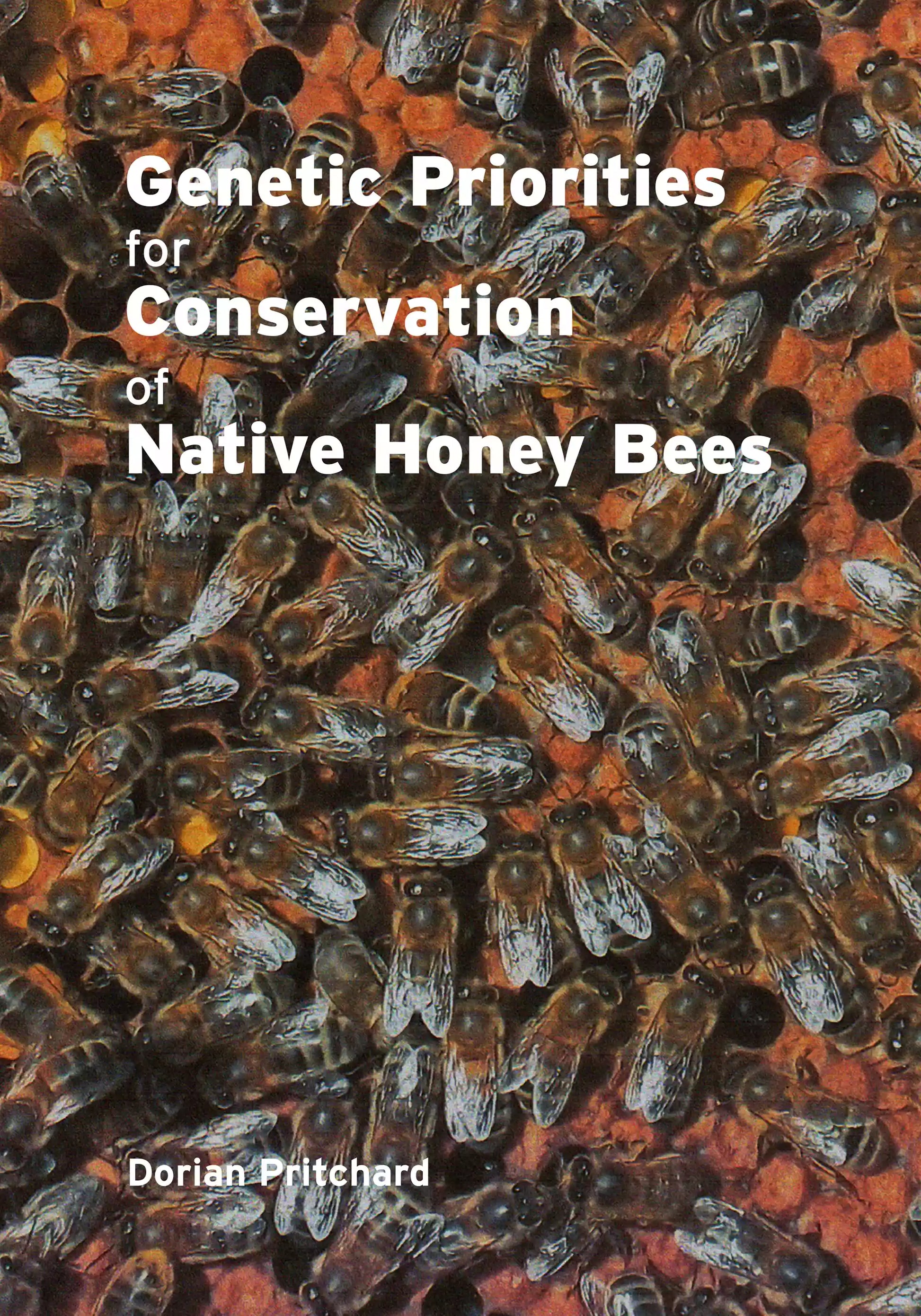Genetic Priorities for Conservation of Native Honey Bees, Pritchard

Genetic Priorities for Conservation of Native Honey Bees
Since Beowulf ’s day the study of honey bee genetics by wing morphometry and DNA analysis has advanced considerably. Meanwhile, many commercial beekeepers and queen breeders, in their quest for ever greater honey production, have taken the uniformity of their bees to even greater lengths, importing bees and/or queens from distant areas, and also routinely treating prophylactically for varroa and other diseases.
At the other extreme, conservationist proponents of ‘let-alone’, ‘natural’ or ‘Darwinian’ beekeeping have also become more evident. Dorian’s genetic expertise and his many years of practical beekeeping enable him to steer a sustainable and yet productive course within this field, with scientific authority. He comes down firmly on the side of keeping only local bees which are adapted to the prevailing climate and environment, while conserving natural variation, and recommends beekeepers “to allow all native colonies to reproduce without restraint, allowing nature to make her own choice of survivors.” Compatible management techniques can aid this process and still provide a worthwhile honey surplus.
VIEW Contents
- Dedication
- Foreword by Philip Denwood
- Acknowledgements
- Author’s Foreword
- Basic Considerations
- My background and orientation
- Keep local and keep close to nature
- Work with natural selection, not against it
- Discrimination of Honeybee Subspecies
- Wing morphometry
- DNA analysis
- The importance of genetic variation
- Preserve queen lines
- The British “Dark” Bee
- The native bee in Britain
- Obtaining native bees
- Siting your hives
- Seasonal climatic change
- Hazards of winter for southern bees
- Benefits of winter for northern bees
- Seasonal management
- Feeding bees
- Global warming
- Population Considerations
- Worldwide threats to honey bee survival
- Genetic variation and the extinction vortex
- The ultimate limiting factor, csd polymorphism
- Loss of genetic variation through use of “breeder queens”
- An explanation
- Brood viability and over-winter survival
- The most adverse consequences of breeder queens
- Can a bad situation be saved?
- Summary: to ensure over-winter survival of your colonies
- Inherited Attributes and Behaviours of Native Bees
- Gentleness
- Breeding for gentleness
- Foraging and flight
- The honey harvest
- Pollen collection
- Acclimatisation
- Overview
- Inherited characters according to caste and sex
- Reproduction
- Proneness to swarm
- Non-prolificacy
- Longevity
- Supersedure
- Brood breaks
- Culling bees
- How many drones are enough?
- Inbreeding
- Disease and Disease Resistance
- Resistance to varroa
- A varroa trap?
- Chalkbrood
- Nosema
- Foul brood
- Wax moth
- Acarine disease
- Isle of Wight Disease – an ongoing puzzle
- Infective bee paralysis?
- Nosema?
- Acarine disease?
- Chronic bee paralysis Virus?
- The Buckfast bee
- Record Keeping and Security
- Hive identity
- Report
- Recommendations
- Social and legal issues
- Camouflage
- Evolution of the British mellifera Genome
- Disease resistance
- Nosema
- Foul brood
- Wax moth
- Acarine disease
- Overview
- Conclusions
- Colonies need community
- Future proofing
- Management priorities
- Mellifera’s dynasty
- To a Dark Lady
- Appendix: How Northern native British bees, A. m. mellifera L. overcome varroa mites
- Glossary
- Index
Unavailable